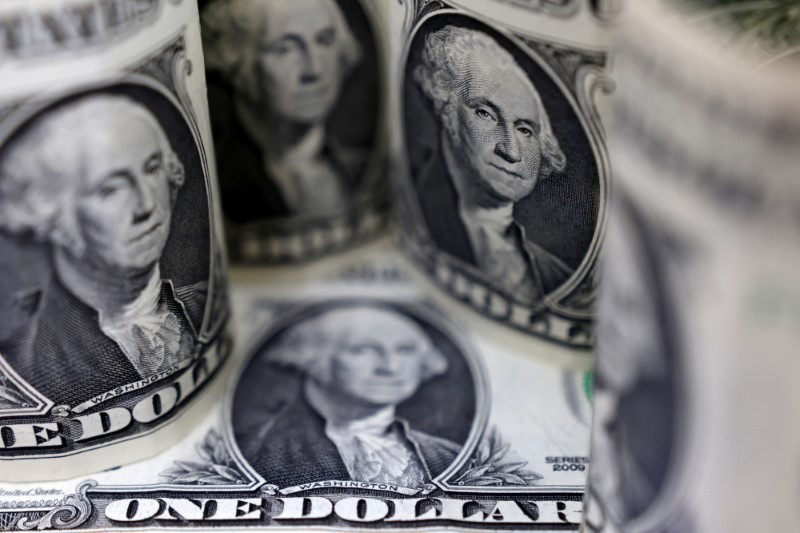By Hannah Lang
NEW YORK (Reuters) – The dollar fell to a one-week high against other major currencies on Friday, capping a turbulent few days in which investors grappled with falling U.S. jobless claims and the prospect of a looming economic crisis.
The U.S. currency weakened against the Japanese yen after a three-day rebound as better-than-expected jobs data on Thursday prompted a retreat from bets on interest rate cuts by the Federal Reserve later in the year.
The yen and the Swiss franc – another safe-haven currency – held near one-week lows as major stock markets rose and Treasury yields fell.
Markets have had a messy week, largely fueled by surprisingly faint U.S. jobs data released a week ago that sent global stocks tumbling. Meanwhile, demand for safe-haven assets like the yen and franc sent those currencies to their highest levels since the start of the year on Monday.
The dollar was last down 0.39% at 146.675 yen, but was still on track for its first weekly gain in six weeks.
“There’s a huge desire in the market to finally use the yen as a safe haven in the face of all the chaos and conflict that’s engulfing the world,” said Juan Perez, chief trading officer at Monex USA in Washington.
The yen, which measures the currency’s value against six others, fell 0.136% to 103.14 after three days of gains.
Against the Swiss franc it weakened by 0.18% to 0.865 francs, but is still on track for a weekly gain.
“The prospect of a pure risk-on, pro-carry environment for foreign currencies in the second half of this year is much less compelling given that our outlook for the dollar/yen and euro/CHF pairs is more conservative,” said UBS currency strategist Yvan Berthoux.
“We don’t expect there to be any major changes. The washout was pretty pronounced in that environment.”
Data released Thursday showed the number of Americans filing recent claims for unemployment benefits fell more than expected last week, calming fears about a jobless market unraveling and confirming that a gradual easing is continuing.
The probability of a 50 basis point interest rate cut at the Federal Reserve’s next meeting on September 17-18 has fallen to 52% from 69% a day earlier, while a 25 basis point cut now has a 49% probability, according to CME Group’s (NASDAQ:) FedWatch Tool.
IS THE YEN SHORT ROLLBACK COMPLETED?
The yen has surged this month, hitting its highest level since Jan. 2 at 141.675 per dollar on Monday, as miniature selling intensified following a surprise rate hike by the Bank of Japan amid weakness in U.S. economic indicators.
Data from the U.S. Commodity Futures Trading Commission (CFTC) on Friday will give a clearer picture of the scale of yen buying that has taken place.
The euro was at $1.0919, little changed from a week earlier. On Monday, it rose to $1.1009 for the first time since Jan. 2.

The pound rose to $1.2756, after a 0.5% overnight gain that took it from its lowest level in more than a month.
It fell 0.29% to $0.657, while the New Zealand dollar hit a three-week high of $0.6035 before retreating. It was last at $0.5998.
